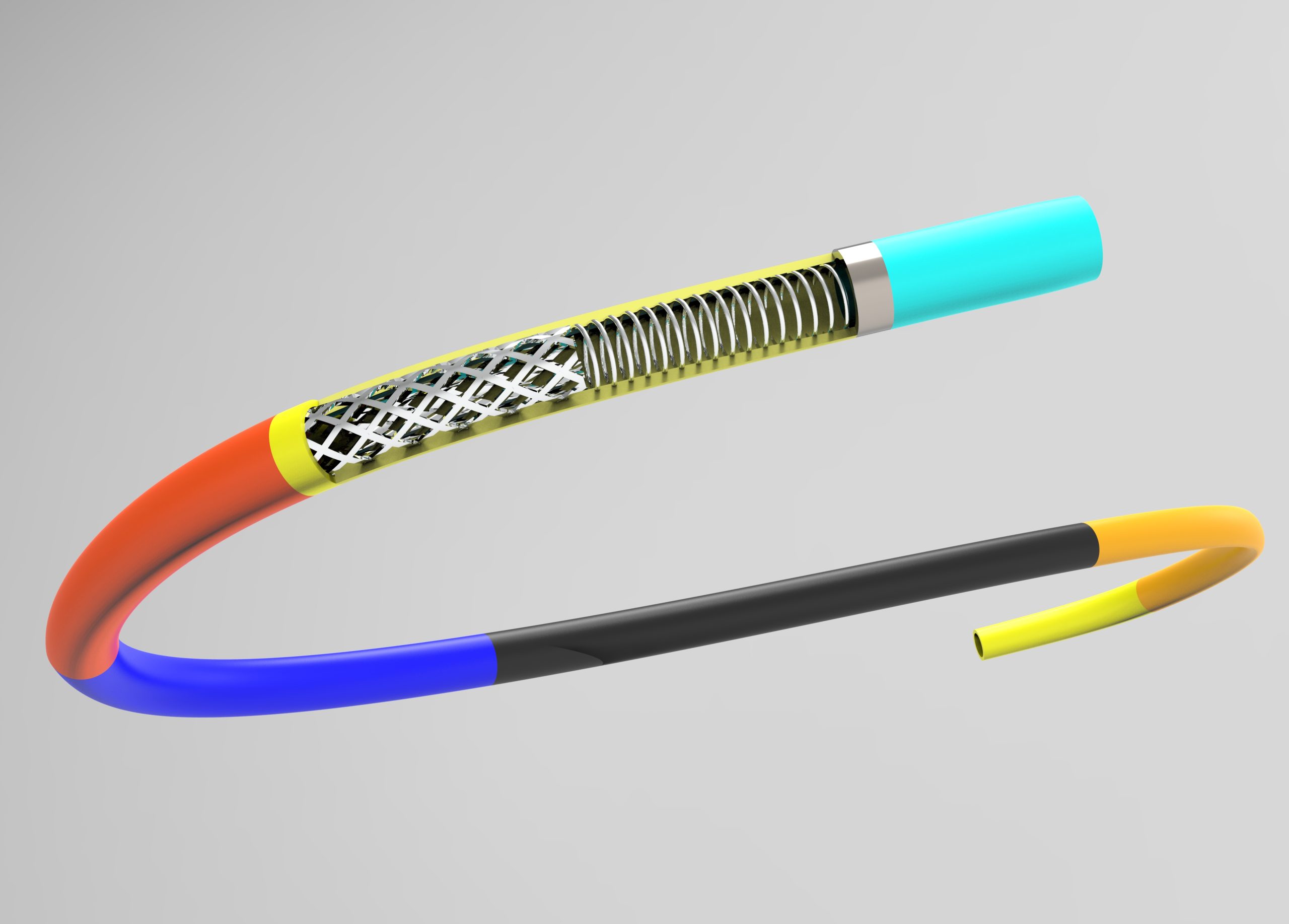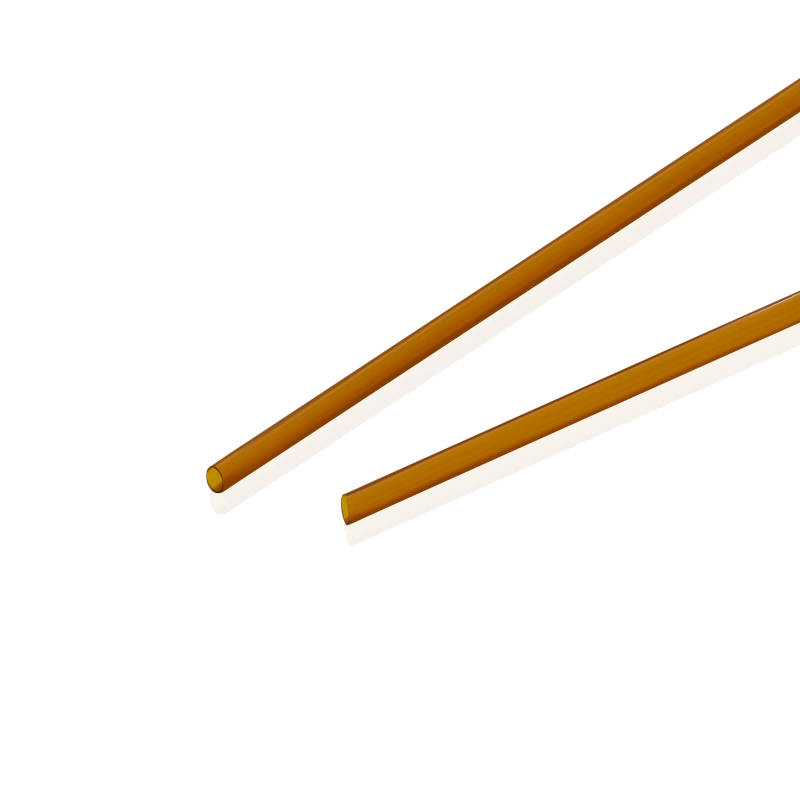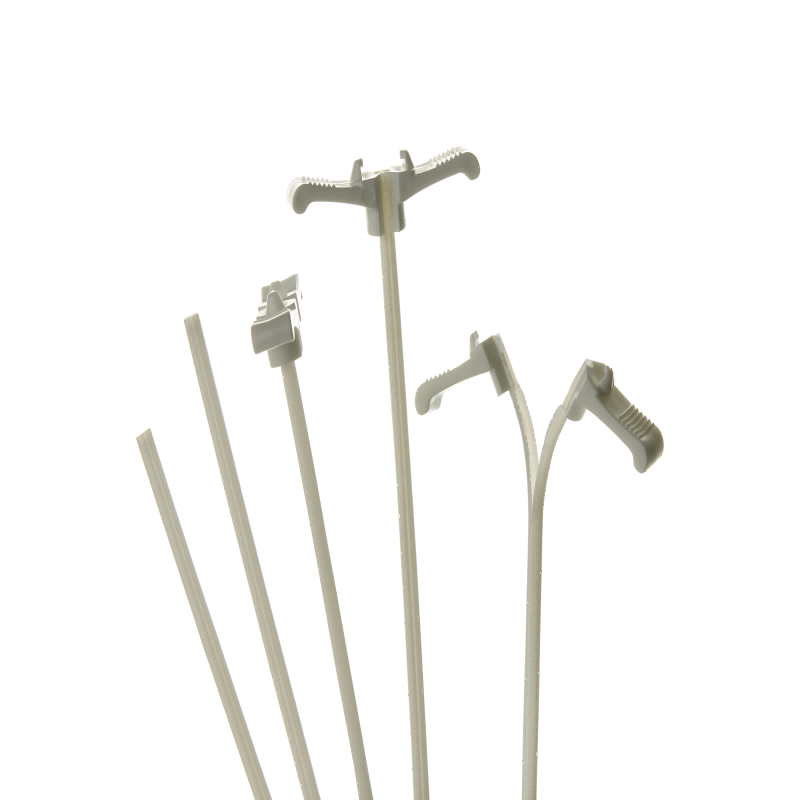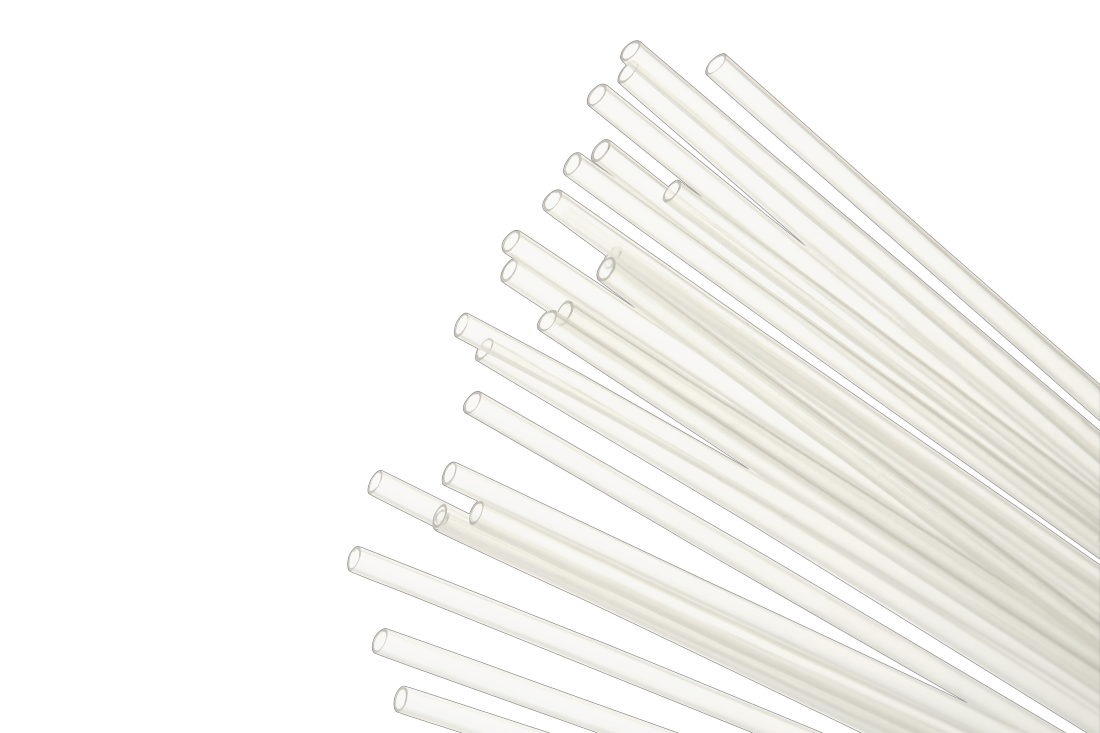Stent delivery system Braided catheter
Establishing an access channel forinstruments to enter the body
Customizable in various sizes to meet different lesion requirements
Features
PTFE smooth inner wall- Reduces resistance, during device delivery
- Provides high-strength support,smoothly delivering stents, occluders,and other implantable devices
- Excellent kink resistance performance,flexibly adapting tovarious curved blood vessels
- Smooth pushing, reduce friction,improve passability
- Simultaneously,effectively reduces damage to the human body
- Clear positioning,ensuring precise stent release
Additional clinical applications of braided catheters:
- Cardiovascular & Structural heart:Aortic, mitral, tricuspid valve replacement delivery systems, Heart muscle cell therapy delivery system.
- Gastroenterology:Endoscopic suturing system, Laparoscopic mixing device for surgical sealant, Stomach wireless implant delivery system to prevent heart failure, lmplant delivery system for acid reflux disease.
- Neurology:Neurovascular guiding catheter, Clot Retriever device for acute ischemic stroke
- Gynecology:Fertilization delivery system, lntroducer of vaginal mesh implant, Ureteral stent delivery
- Pulmonary:Delivery system for artificial larynx, ENT navigation system.
Technical Parameters
- Catheter outer diameter: 5-28F
- Inner and outerdiameter tolerance: ±02-0.05mm
- Catheter length:500-2600mm
- Catheter tensilestrength: 30-300N
- Minimum catheter bending radius:10mm
- Catheter elongationrate: 0-5%, customizable (10N constant tension applied to both ends of the tubing)
- Catheter surface treatment: Hydrophilic coating
- Catheter reinforcement structure:Steel wire mesh, nylon wire mesh
- Catheter materials:PTFE, Pebax, PE, Nylon, PU, SUS
- Catheter radiopaque materials:Platinum-iridium alloy marker, tantalum marker, barium sulfate, tungsten, bismuth oxide
- Catheter layers: 3 layers, 4 layers, 5 layers
- Catheter hardness:TPU, PEBAX (25D – 72D)
Our Collaborative Approach

Related products
PI Tube
The Demax PI Tube is constructed using polyimide (PI), a high-performance polymer known for its excellent mechanical properties and chemical resistance. This tubing is manufactured to meet the stringent standards of the medical industry, ensuring biocompatibility and safety for patient use. It is free from latex, phthalates, and other harmful substances, minimizing the risk of adverse reactions or complications.
Peelable Tube
The Demax Peelable Tube is an innovative medical device designed to provide easy and controlled access to catheters and guidewires during medical procedures. Crafted with precision and utilizing advanced materials, this peelable tube offers exceptional performance and reliability, making it an indispensable tool for medical professionals in various clinical settings.
Braid & Coil Reinforcement Tube
The Demax Braid & Coil Reinforcement Tube is an innovative medical device designed to provide enhanced strength and flexibility for a wide range of medical applications. Crafted with precision and utilizing advanced materials, this reinforced tubing offers exceptional performance and reliability, making it an indispensable tool for medical professionals in various clinical settings.
FEP Heat Shrink Tube
The FEP Heat Shrink Tube boasts a composition rooted in fluorinated ethylene propylene (FEP), a thermoplastic polymer renowned for its exceptional properties in medical applications.
FEP exhibits a unique combination of characteristics that make it ideally suited for medical tubing. Its molecular structure imparts remarkable clarity to the tubing, allowing for optimal visualization of fluids and instruments during medical procedures, essential for accurate monitoring and precise manipulation.





